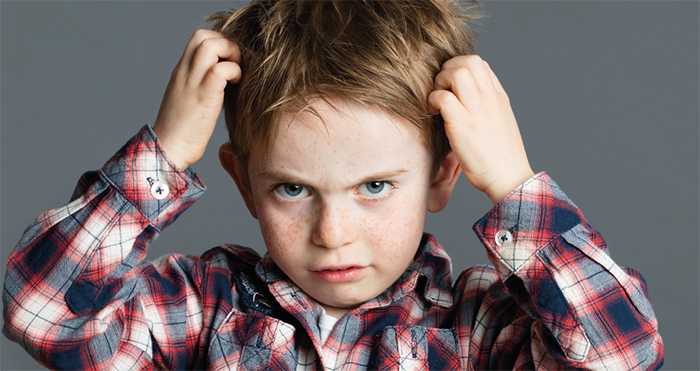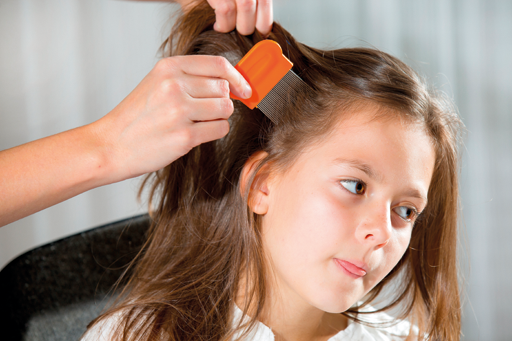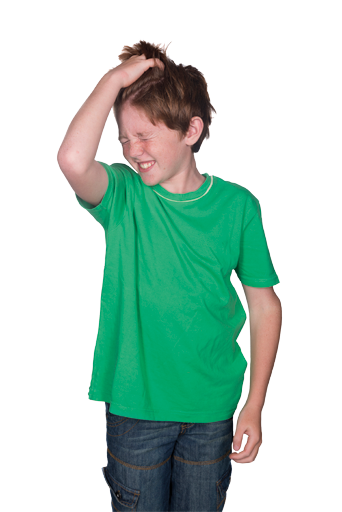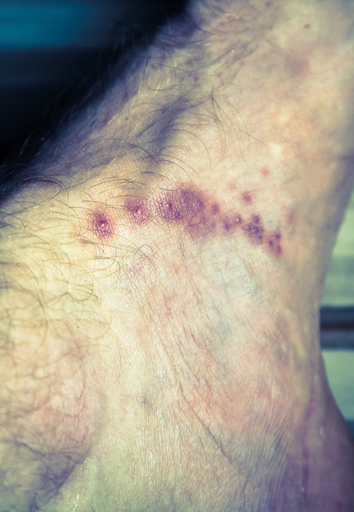Clinical

Uninvited guests: treating head lice in pharmacy
In Clinical
Let’s get clinical. Follow the links below to find out more about the latest clinical insight in community pharmacy.Bookmark
Record learning outcomes
As the new school year gets underway pharmacies are likely to see a spike in queries about head lice, particularly following NHS England’s decision that OTC treatments should no longer be prescribed.

Learning objectives
After reading this article you will be able to:
- Explain how an infestation can occur and how head lice can be detected
- Help customers choose the right treatment
- Discuss steps to prevent further infestations
Pharmacy teams need to be prepared to advise worried parents about detecting and treating head lice and be able to outline the steps they can take to prevent infestations. With NHS England looking to save £600,000 a year by curbing OTC prescribing for head lice, some parents will now have to pay for treatment making it essential that they know how to use it correctly. It is therefore important that pharmacy teams’ knowledge about treating head lice is right up to date.
Key facts
- At least one in three children in the UK will catch head lice at some time in the year
- Head lice are transmitted by head-to-head contact, so infestations are more prevalent during school term time
- A live louse must be found to confirm an infestation
Symptoms
Typical signs of head lice are usually itchiness on the scalp, around the ears and the back of the neck. “Head lice can cause an itchy sensation on the scalp that is not due to head lice biting but instead an allergic reaction to them. However, some people may experience no symptoms at all,” points out Perrigo’s Laure de Brauer.
Sometimes the eggs and lice are visible but this depends on how long the infestation has been there, as the eggs alone are difficult to spot at an early stage.
Detection
Head lice infestations can affect anyone of any age but are seen most often in the hair of children aged four to 11 years (girls more than boys) at the start of the school year.
NICE recommends that a head lice infestation should be confirmed by detection combing1 – systematically combing the hair with a fine-toothed head lice detection comb. This is a more reliable method than visual inspection.
Detection combing can be done on wet or dry hair, but wet combing is more accurate because head lice become motionless when wet. NICE stresses that a live louse must be found to confirm an active infestation – the presence of louse eggs alone does not necessarily indicate infestation. All household members zand close contacts should also be checked if head lice are confirmed.

Treatment
There are several methods that can be recommended for managing a head lice infestation. All have their advantages and disadvantages. Rajshri Owen, head of professional and patient services at Numark, says pharmacy teams should help customers choose the most appropriate product for their child because not all treatments will be suitable for everyone.
“Understanding a person’s preference, medical and drug history, the product’s active ingredient, how the active ingredient works, how the product should be used and if anything has been tried previously will allow pharmacists and pharmacy staff to recommend and help parents choose the right head lice product,” he says.
NICE says no treatment can guarantee success, but that a treatment has the best chance of success if it is used correctly and if all affected household members are treated on the same day.
Mechanical removal
This involves systematically combing the whole head of wet hair with a detection comb to remove the lice. The comb must be cleaned after each pass through the hair to remove lice and eggs, which is best done by wiping it on clean white paper or cloth.
The process must be repeated every few days for two weeks. It usually takes about 10 minutes to comb short hair, and 20-30 minutes for long, frizzy or curly hair. The advantages of this method are that it is safe, there are no resistance issues, it is inexpensive and combs can be reused.
The disadvantages are that the technique is time-consuming and labour intensive – a drawback when treating young children or if several people have to be treated at the same time.
Physical treatments
Products containing dimeticone or isopropyl myristate kill the lice through physical action. Dimeticone coats the surfaces of head lice and suffocates them, while isopropyl myristate dehydrates head lice by dissolving their external wax coating.
The advantages of these products are that they are easy to apply, they have few side-effects, are odourless or have only a faint perfume, and the head lice are unlikely to become resistant to them.
The disadvantages are that instructions must be followed exactly otherwise the treatment won’t work. Some of these products don’t kill louse eggs either, so it is vital that the treatment is repeated after a week to kill any lice that have hatched since the first application.

Traditional insecticides
Traditional insecticides poison the lice by chemical means. In the UK the only chemical insecticide that is currently recommended for treating head lice is malathion.
There is no evidence of any serious adverse reactions associated with this ingredient, although skin irritation can occur. The main disadvantages are that head lice have been reported to be resistant to the chemical since the mid-1990s and preparations can have an unpleasant smell, which is off-putting to some.
Herbal or alternative treatments
Herbal remedies and essential oil-based treatments, such as tea tree oil, eucalyptus oil and lavender oil, together with electric combs, are often promoted as potential treatments for head lice. However, NICE says these products should not be recommended as there is no evidence that they work or are safe to use.

Advice on application
“It is always worth doing a quick double check of the application instructions when providing advice and going through them with the customer,” says Mark Sykes, pharmacy qualifications lead at Weldricks. “Each product has slightly different application instructions, some products require a repeat treatment after seven days, some only if more lice are seen. There are also differences in the length of time the product is left on the hair.
“It is also important to check and, if necessary, treat the rest of the family and close contacts so that there is less chance of the head lice returning. Pharmacy teams should make sure they sell enough product to treat fully so, for example, someone with long, thick hair might need more than one bottle of product for a single treatment.”
Wet combing or dimeticone 4% lotion is recommended by NICE first-line for pregnant or breastfeeding women, young children aged six months to two years, and people with asthma or eczema. Shampoos are generally not recommended because they are diluted too much and have an insufficient contact time to kill eggs. After treatment, detection combing should be undertaken to check it was successful.
Quick reminder...
Head lice are small, wingless insects, up to 3mm long, that live only on human scalps. The adult louse feeds on blood from its host several times a day and can live for about 30 days. Head lice have six legs, which have hook-like claws to hold onto the hair and are grey-white to black in colour.
The female louse lays up to eight eggs per day. Louse eggs, or nits, are yellowish-white and are attached to the hair shafts. They usually take seven to 10 days to hatch and then a similar length of time to mature into adults.
Head lice cannot jump, fly or swim. They crawl between hair shafts and from one host to the other, so transmission of head lice requires head-to-head contact – which is why infestations increase when children go back to school and come into close contact with each other again after the school holidays.
Preventing infestations
When advising parents about preventing infestations, Farah Ali, general manager and pharmacist at Perrigo’s Warman-Freed pharmacy, says that because head lice are passed on via direct head-to-head contact, it is difficult to prevent infestations in smaller children as they regularly play and interact with others.
“The best prevention measure is to ensure that children of school age, especially younger children, have their hair combed regularly with a detection comb, that parents perform visual checks, and that the school or nursery is informed if lice are spotted so that other parents can be advised to check their own children and treat if necessary. However, children with head lice do not need to stay off school.”
NICE says there is no evidence that products marketed as head lice repellents work. Neither is there any evidence that head lice treatments used prophylactically are effective. Parents should also be advised that there is no evidence that measures beyond normal personal hygiene, house cleaning and laundry can prevent reinfestation, adds NICE. It recommends advising children to avoid head-to-head contact and for girls to keep long hair tied up.
Reassuring parents
Head lice can be a sensitive topic and lots of parents will be upset by discovering head lice in their children’s hair. Pharmacy teams need to be sympathetic and authoritative when giving advice and ready to scotch myths about head lice, such as:
If you have lice, your head will be itchy
Many people with head lice don’t itch. An itchy reaction occurs only if the person is allergic to head lice bites or faeces. The itch may only start a few weeks after the infestation.
You can get head lice from pets
Head lice can only live on human beings – they can’t be caught from animals.
Head lice carry and transmit diseases
Head lice have not been shown to spread disease. Lice can jump and spread via items such as clothes, towels and hairbrushes, and infest the house Lice do not have wings and cannot fly, jump, hop or swim. They move by crawling, which is why head-to-head contact is the commonest way for head lice to spread from one person to another. NICE says there is no need to wash clothing or bedding that has been in contact with lice.
Lice are more likely if hair is dirty or personal hygiene is poor
Getting head lice has nothing to do with personal hygiene or the cleanliness of a home and head lice will live on all types of hair, having no preference for whether it is clean, dirty, long or short.
MHRA drug safety update
The Medicines and Healthcare products Regulatory Agency (MHRA) issued a drug safety update in March 2018 about some head lice products being combustible. This stated there is a risk of serious burns if treated hair is exposed to open flames or other sources of ignition, such as cigarettes. “It is therefore paramount that pharmacists discuss the risk of fire when discussing treatment options with parents/carers or the patient,” warns Numark’s Rajshri Owen.
Treatment failure
If a customer returns saying the head lice treatment has not worked, the British Association of Dermatologists recommends checking whether:
- The diagnosis of head lice infestation is correct – the presence of louse eggs alone, whether hatched or unhatched, and/or itching, does not indicate treatment failure
- The customer has followed the treatment instructions correctly
- The lice are resistant to the chosen treatment
- The child may have picked up a new infestation immediately after the treatment finished. Have all household members, close family and friends been assessed to identify possible sources of reinfestation?
The pharmacy team can then recommend that the same treatment used by the customer can be repeated, or a different treatment tried.
At the start of the new school year it is important for pharmacy teams to ensure they are up-to-date regarding their knowledge about treating head lice, says Mark Sykes. “Advice is updated from time to time and new products come to market. New doesn’t always mean more effective, so it is essential to read up on a product and compare it to what you already know to see if you need to change the recommendations that you make.”
Reference
1. NICE Clinical Knowledge Summaries: Head lice.
Other parasitic infections
Threadworms
Threadworms are tiny worms that infect the large intestine and lay eggs around the anus. They are quite common, particularly in children under 10 years of age, and spread easily. The symptoms are extreme itching around the anus or vagina, particularly at night.
The infection can be treated with a single dose of mebendazole in liquid or tablet form. Medication kills the worms but not their eggs, which can survive for two weeks, so customers should be advised to adopt hygiene measures for two weeks after taking medication to prevent them from swallowing eggs, which may cause a new infection.
All household members should be treated at the same time. A second dose two weeks after the first is sometimes needed if the infection has not cleared. Children under the age of six months and pregnant or breastfeeding women should be advised to adopt hygiene measures only for six weeks.
Scabies
Scabies is an itchy rash caused by the parasitic mite, Sarcoptes scabiei, which burrows into the skin. The mites, smaller than a pinhead, are commonest in the young and the elderly. They are usually picked up by direct skinto- skin contact with someone who already has scabies.
Itching is the main symptom caused by the immune system’s reaction to the mites. The itching is often severe and tends to be in one place at first (often the hands) and then spreads to other areas. The itch is generally worse at night and after a hot bath.
The rash of scabies is a mixture of scratch marks and red scaly areas. It may become infected and develop small pus spots. A widespread rash similar to eczema is very common.
Treatment is with permethrin cream, which must be reapplied after seven days to ensure that all the mites are killed. Everyone in the household, close contacts and sexual contacts must be treated at the same time.
Giardiasis
Giardiasis is an infection in the small intestine caused by a microscopic parasite called giardia lamblia. It is caught through contact with infected people, by eating or drinking contaminated food or water, touching surfaces that have been touched by an infected person and through having sex.
The main symptoms are smelly diarrhoea, tummy pain or cramps, flatulence, belching, bloating and weight loss. The infection can be treated with antibiotics. If the customer is dehydrated, oral rehydration sachets should be recommended.
Schistosomiasis
Schistosomiasis is an infection caused by a parasitic worm that lives in fresh water in subtropical and tropical regions. Many people don’t have any symptoms when they first become infected but the parasite can remain in the body for many years and cause damage to organs such as the bladder, kidneys and liver.
After a few weeks, some people may develop a high temperature, an itchy, red, blotchy and raised rash, a cough, diarrhoea, muscle and joint pain, abdominal pain and a general sense of feeling unwell. The infection is treated with praziquantel.

 When advising parents about preventing infestations, Farah Ali, general manager and pharmacist at Perrigo’s Warman-Freed pharmacy, says that because head lice are passed on via direct head-to-head contact, it is difficult to prevent infestations in smaller children as they regularly play and interact with others.
When advising parents about preventing infestations, Farah Ali, general manager and pharmacist at Perrigo’s Warman-Freed pharmacy, says that because head lice are passed on via direct head-to-head contact, it is difficult to prevent infestations in smaller children as they regularly play and interact with others. Scabies is an itchy rash caused by the parasitic mite, Sarcoptes scabiei, which burrows into the skin. The mites, smaller than a pinhead, are commonest in the young and the elderly. They are usually picked up by direct skinto- skin contact with someone who already has scabies.
Scabies is an itchy rash caused by the parasitic mite, Sarcoptes scabiei, which burrows into the skin. The mites, smaller than a pinhead, are commonest in the young and the elderly. They are usually picked up by direct skinto- skin contact with someone who already has scabies.